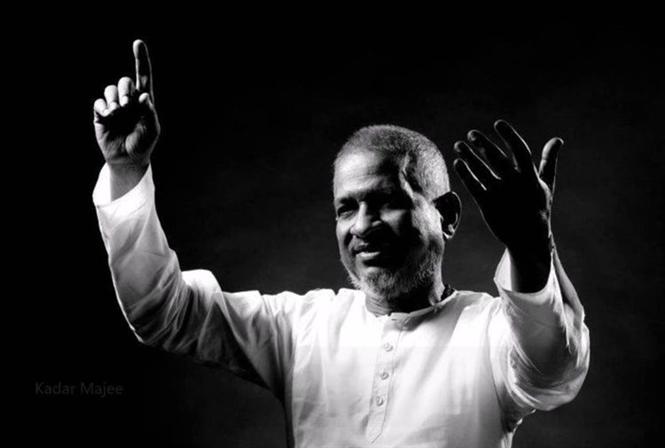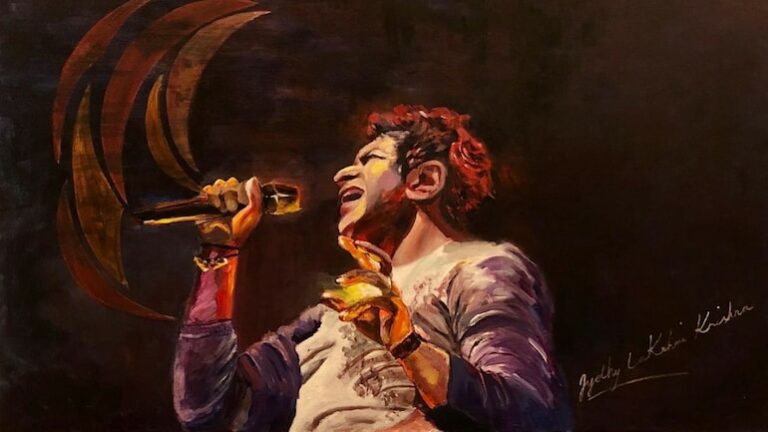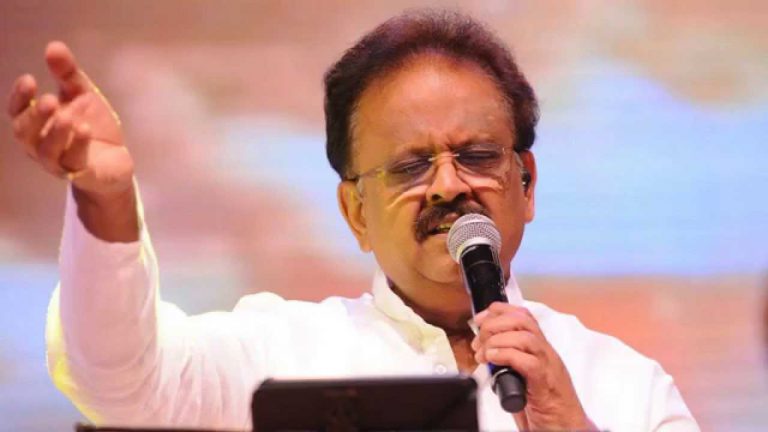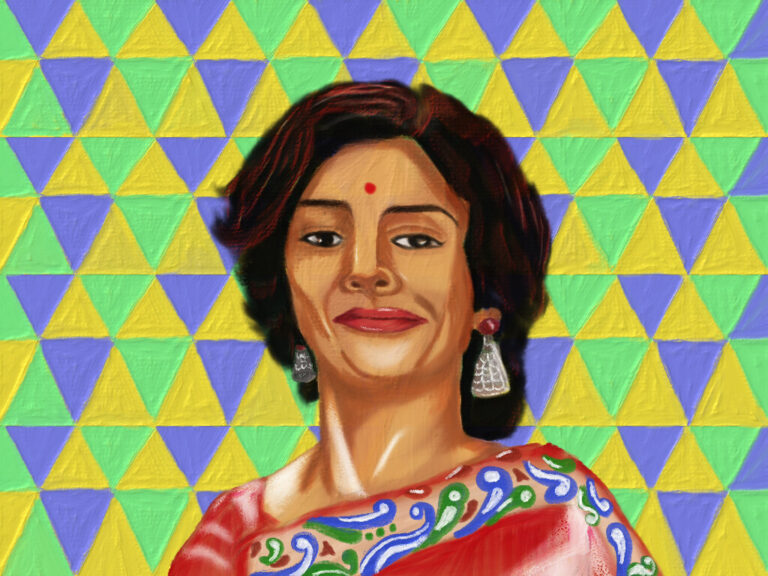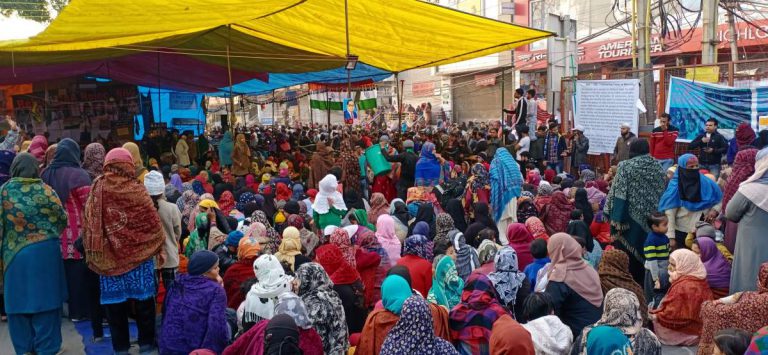Ilaiyaraaja: The King of Music, is a Global Phenomenon
Deivendra Kumar is a Research Scholar at the Department of Communication, University of Hyderabad.
Ilaiyaraaja, the name itself weaves musical magic.[1] Maestro Ilaiyaraaja, better known as Isaignani, often called “Raasayya” by his beloved legion fans, is an artist of the millennium. The recent screening of Ilaiyaraaja’s promotional film about his playlist on Spotify on the giant LED screens (billboards) of Times Square in New York, a popular American landmark, has accoladed a royal honour to the artiste and firmly established him as a global phenomenon. For Indians, especially for south Indians, very particularly for Tamilians, Ilaiyaraaja is defined as a ‘god of music’ and a ‘cultural figure’. Evidently, his songs and music are omnipresent in their life as well as omnipotent in carrying out (outpouring) their emotions. Karthikeyan Damodaran, a notable researcher on sociology, cinema and caste, opines that it is very difficult for Tamilians to escape from the presence of Ilaiyaraaja in their everyday life personally.[1; 2]
A much-celebrated music composer since the last four decades who has composed more than 8000 songs, currently working on his 1419th movie album, is still remarkably expanding his span of musical career in this digital era. As stated by the film critic Rajesh Rajamani, the legendary musician not only served as a music composer but also performed in the roles as a lyricist, orchestrator, music conductor and arranger.[3] He is quite particular about documenting the sounds of rural and folk music accompanied by instruments, which were a major part of the soundscapes in Tamil Nadu villages. By incorporating such soundings, he processed rustic music into film music for countryside narratives to sustain more authenticity in them. Thus, he emerged as a notable composer in his way of rural, folksy music and he became a repository of such native, earthy music and songs in Tamil cinema. Following a consistent success of his songs and music in films throughout, he became an innovative composer in Tamil cinema’s music with a different listening experience for the Tamil audience since his debut film Annakkili (1976).[1; 2]
Sundar Kaali, a notable scholar on Tamil cinema observes that the arrival of Ilaiyaraaja has revamped the concept of film music that existed in Tamil Nadu.[4] Ilaiyaraaja began to produce a blended form of music incorporating Indian classical music, western classical music and folk music of Tamils. His novel way of orchestration used in his songs and music was considered as a contribution to Tamil cinema.[1; 2] He also started showcasing the flair he had on Carnatic music in the national award bagging films like Kadhal Oviyam (1982), Sindhu Bhairavi (1985), Salangai Oli (1985), and Rudraveena (1988). Gradually he remarked himself as a trendsetter in Tamil cinema’s music industry for many decades.
Ilaiyaraaja as a trendsetter
Karthikeyan Damodaran postulates that Ilaiyaraaja is one of the successive figures among the trio trendsetters of ‘neo-nativity Tamil films’ other than director Bharathiraja and lyricist-poet Vairamuthu in the list.[2] Hailing from a village like Pannaipuram in Theni district of Tamil Nadu, Ilaiyaraaja followed a music style that is very familiar to him. Apart from going with complex tunes and compositions initially, he made music with well-known earthy and folksy characteristics. His musical combination with the films of Bharathiraja, and lyrics of Vairamuthu reiterated the rooted and earthy music in Tamil cinema. Thus, he documented the rustic lives of the countryside more authentic and native.[2] Over a while, Ilaiyaraaja gained a star value and emerged as an eminent musician. As his music became an instigating factor for the film’s success as a marketable commodity, many directors and producers rushed to line-up him for their films. It is estimated that during that time, Ilaiyaraaja has composed around 40 films in a year.[1]
According to film historian M.S.S Pandian, the popularity of Ilaiyaraaja which he garnered out of his blended musical combination of the Indian classic, western classic and rural folk music of Tamils, made an embarrassment among the music elites.[5] Likewise, his entry into classical and Carnatic music made unrest among the purists of such musical genres.[2] He revolutionized the entire Tamil film music by using traditional instruments like Thaarai and Thappattai (one side drum), which were considered polluted instruments being used by oppressed communities.[1; 2] Ilaiyaraaja is very notable in amalgamation of various musical genres in film music. He has composed folk or traditional music, tribal music and many other popular musical genres like jazz, pop, dance music like disco, rock and roll etc. He is well versed in using silence in his music and impacts it can create among the audience. In many concerts and interviews, he mentioned “silence is also a music, it also gives emotions”. The songs like “Antha Nilava Thaan” from Mudhal Mariyadhai (1985) and “Adi Aathadi” from Kadalora Kavithaigal (1986) were notable in using silence in between the song. Similarly he used silence in background music of many films to retain the emotion instead of music.
Raaja’s music in the rural milieu
Apart from all the varieties of musical genres he produced, his kind of folksy, earthy music with a rural touch is predominant among them. His songs and music documented both the life and culture of villages in Tamil Nadu extending to their popular forms like folklore, eulogy, dance, and drama. The composition of Ilaiyaraaja was a musical feast for the people in the rural areas in depicting and reflecting their music, culture, festivity, and commemoration. Still the rural areas of Tamil Nadu during the village temple festivals and other events of marriages and commemorations are adorned by the songs of Ilaiyaraaja.
Besides, there are certain songs of Ilaiyaraaja which had both cinema and political life. Though the maestro never expressed his political affiliations and also often refused explicitly, some of his songs became significant in political manifestation in the socio-cultural spheres of Tamil Nadu. Notably, the songs like “Manidha Manidha” from Kann Sivandhal Mann Sivakkum (1983) and “Ezhugave Padaigal Ezhugave” from Mr. Bharath explicitly became the anthems of leftist parties during their rallies and processions in Tamil Nadu. Likewise, songs like “Poraadada oru Vaalendhada, Venghaikalo Ini Thoongaadhada” from the film Alai Osai (1985) and the song “Potri Paadadi Penne, Thevar Kaaladi Manne” from Thevar Magan (1992) hold greater significance in the southern belt of Tamil Nadu in celebrating the caste identity and glorification of Devendra Kula Vellalars (Pallars) and Thevars (Mukkulathors) castes respectively.[1] Thus his songs become remarkable in various socio-political and cultural arenas of Tamil Nadu and make them enduring forever.
Raaja’s music in the contemporary era
Among the other celebrated newcomers and young musicians in the Tamil film industry, Ilaiyaraaja is still holding the musical supremacy in his unique way. The new generations who are mostly exposed to the music produced since early 2000s are getting introduced to Ilaiyaraaja’s music through new media much closer. The advent of new media and digital platforms became the space for them to experience the musical spectrum of Ilaiyaraaja and thus it increased his visibility manifold. Gradually, it strengthened Ilaiyaraaja as the most celebrated Indian musician generation after generation.[1]
For the filmmakers of Tamil cinema, working with Ilaiyaraaja for their film’s music is considered as something special amongst the other young-talented musicians of the industry. Similarly, there are a bunch of filmmakers of the contemporary times who deliberately use Ilaiyaraaja’s songs, music and BGMs in their film narratives to reiterate his remarkable music and as a way of documenting them for the unknown popular audience. The popular songs of Ilaiyaraaja musical like “Thottam Konda Raasave” from Pakalil Oru Iravu (1979) and “Siru Ponmani Asaiyum” from Kallukkul Eeram (1980) were purposefully used in the film Subramaniapuram (2008). Similarly, the song “Andhiyila Vaanam” and the musical version of the song “Ennadi Meenatchi” from the films like Chinnavar (1992) and Ilamai Oonjal Aadukirathu (1978) respectively were used in the film Super Deluxe (2019). Recently, the song “Peru Vachalum Vaikkama Ponaalum Malli Vaasam” from the film Dikkiloona (2021) was a recent trend on social media, is a remixed version of the same, originally composed by Ilaiyaraaja for the film Michael Madhana Kamarajan (1990). Likewise, the films like Aaranyakaandam (2009), Sarvam (2009), Kappal (2014), Cuckoo (2014), Kabali (2016) and even Pariyerum Perumal (2018), Mehandi Circus (2019), Karnan (2021) and Jagame Thandhiram (2021) of recent times has used many original versions of Ilaiyaraaja music and songs.
Following his own style of music in all vibrant genres with uncompromisable change, Ilaiyaraaja has covered his ardent legion fans for more than four generations. Despite all socio-political criticism, Ilaiyaraaja is a living legend. His music is ubiquitous and universal, beyond borders. Thus, it establishes him as a global phenomenon, beyond time.
References
- Damodaran, K. (2018, September 10). An Artiste of the Millennium: Ilaiyaraaja at 75. The Wire. Retrieved November 27, 2021, from https://thewire.in/the-arts/an-artiste-of-the-millennium-ilaiyaraaja-at-75
- Damodaran, K. (2013). Three Trendsetters: Nativity and Rural Milieu in Tamil Films. Deep Focus Cinema, 1(4), 66–71.
- Rajamani, R. (2020, June 9). To Appreciate Ilaiyaraaja’s Anti-Caste Politics, You Have To Listen To His Music. HuffPost. Retrieved November 27, 2021, from https://www.huffpost.com/archive/in/entry/to-appreciate-ilaiyaraaja-s-anti-caste-politics-you-have-to-listen-to-his-music_in_5eda5614c5b6817661649db5
- Kaali, S. (2000). Narrating Seduction: Vicissitudes of the Sexed object in Tamil Nativity Film. In R. S. Vasudevan (Ed.), Making Meaning in Indian Cinema (pp. 168–190). Oxford University Press.
- Pandian, M. S. S. (1996). Tamil Cultural Elites and Cinema: Outline of an Argument. Economic and Political Weekly, 31(15), 950–955. http://www.jstor.org/stable/4404028


